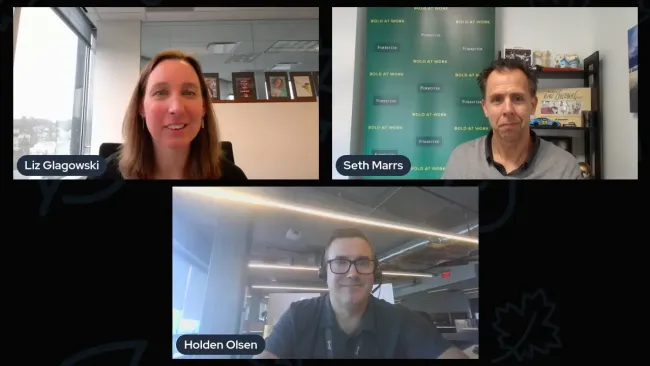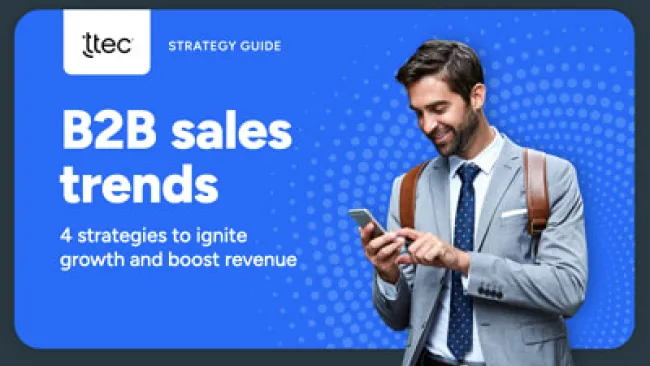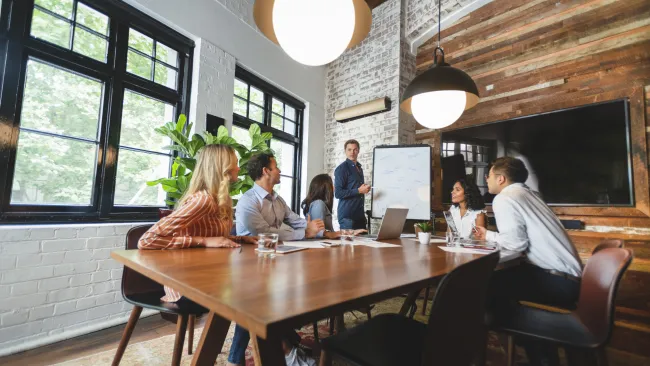Preparing for the future is no easy task. But savvy business leaders understand that it's a necessity. Unless they are well prepared to handle the demands of their customers and cater to changes in their behavior, organizations will struggle to survive, especially as their competitors continue to adapt.
The past years have seen ample emphasis on preparing for the customers of 2020. Business leaders have been looking at the changing landscape to determine what the customers of the coming era will look like. According to Customers: The Future of B-to-B Customer Experience 2020, a study by Walker Information, the customers of 2020 will only want to do business with organizations that know them and their business needs.
Today's customers are already moving in that direction. Having easy access to abundant information about the products and services they're interested in means that the buying journey has shifted and customers are contacting organizations they're interested in later in the process, many times when they're ready to pull the trigger and make a purchase.
With customers controlling so much more of the sales funnel, digital media-—particularly lead generation and search--—will continue to play a significant role. Brands have been investing heavily in these channels, and we expect the shift in marketing spend will continue. In fact, a report by ZenithOptimedia notes that after peaking at 40.4 percent this year, television's market share is expected to decline in 2015, with larger emphasis on other channels.
The shift to new channels has two main drivers: changing media consumption habits among consumers, and the ability in non-traditional channels to gather and act on granular data about customers' interests and engagement, leading to richer profiles and more relevant interactions.
Specifically, search is taking a more prominent role. More evolved and accessible search capabilities available on digital media provide both customers and organizations with a plethora of data that was previously unavailable to sales and marketing departments. In addition, search is now typically the first step for customers considering a purchase. This reality is revolutionizing the way organizations communicate with customers.
Business leaders have recognized that they need to engage customers on their terms by understanding their behavior and reaching out with information that is targeted to that individual customer's needs. The one-size-fits-all approach has long stopped working, and customers themselves are demanding a tailored and custom conversation that is based on their needs, takes into consideration information they have already provided, and complements it.
The quest for the right information
Information has put customers in the driving seat. Now they are able to conduct research about businesses, products, and services, sometimes even before they are certain what they're looking for. Rather than solidifying an already-made choice, search is instrumental in the decision-making process and has completely changed the role of sales teams. Customers no longer need to speak to a sales person to find out information about a company, and in fact these conversations are being moved further down the sales funnel.
With customers dictating the way forward, organizations have recognized the need to change their sales practices. It is no longer acceptable for organizations to give customers information the brand feels they should have. Instead, we have moved from a push to a pull system where it's the customer who decides what he wants to know. This shift gives customers ultimate control over what they want to learn more about. Further, customers are able to get information that is more relevant to them rather than having to sift through data to find out what interests them.
While this phenomenon might seem to take control away from organizations and put it in customers' hands, companies instead have more robust data to better understand their customers and allow them to deliver extremely tailored messages. For example:
- Today's increasingly mobile customers are leaving behind a digital footprint that allows brands to understand changes in their behavior anywhere and anytime.
- Geolocation technology allows companies to know when their customers are close to their stores, and some technology aware brands can tell where in their stores a customer is at any particular moment.
- Remarketing programs reinforce the brand to interested consumers by showing ads to users who've previously visited a website or done searches on specific keywords.
Companies typically have search strategies and data strategies, but rarely combine the two data sets to build a more complete picture. However, revenue potential easily grows when search is added to the data strategy mix. For example, a shoe retailer can determine whether an individual customer is interested in sportswear or evening shoes based on their search history or in-store location, couple that information with purchase and online browsing history to determine the value of that customer, and then use that data to push a targeted message, for example a promotion, to the customer's phone.
Going beyond the immediate sale
A robust customer profile that includes search information gives organizations insight that can help them determine and predict customers' future needs. For example, a customer who has just booked a vacation to an exotic destination may need a prompt to realize he should also purchase travel insurance. By personalizing the message, and explaining why that particular destination might need travel insurance, the company is more likely to close a sale.
Further, by looking at the customer's search history, the organization can have a better idea of the activities that traveler is interested in and can make tailored recommendations, such as an extreme sports package.
In addition, merging search data with other information to create in-depth customer profiles helps firms identify customer groups with similar attributes. This data is instrumental in determining a customer's next step in his buying journey, allowing organizations to predict future needs.
Forward-thinking organizations are putting in place structures to remain top-of-mind with customers whose digital body language uncovers a desire to do business with the brand. Companies are taking customers' search queries and leveraging display advertising to make sure customers will not forget about the brand. We recently worked with Home Security Store to show display ads to customers who had previously visited the California-based security retailer's site. The dynamic remarketing project led to a profit of $4.30 for every $1 invested in the campaign.
While having the right information in hand will help organizations reach out to the right customers, it's imperative to deliver the right message. Customers want information that provides them with value they didn't have beforehand. Armed with information about customers' needs and preferences, brands can become trusted advisors, giving customers new insights that will help them make a purchase decision.
A glimpse into the future
No one has a crystal ball to see the future, but we are confident that the power of search will only become stronger in the coming years. We are already seeing search evolving beyond the traditional search engine format and being extended to voice, as more customers use their mobile devices to carry out voice-prompted searches.
Secondly, organizations are beginning to leverage multiple data sources to better understand their customers. Messages are tied to the behavior and preferences of individual customers and are narrowed down by time and space to be as relevant as possible.
As customers change, organizations need to shed their "advertiser" label and instead become trusted advisors to their customers.

















